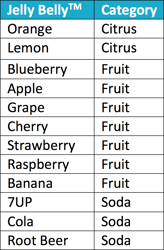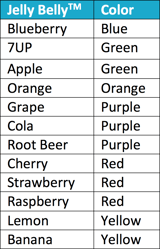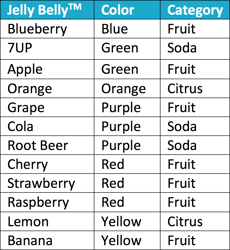
Fundraising 101: Donor Segmentation and Targeting
“The sun shone, having no alternative, on the nothing new.” — Samuel Beckett, Murphy
If you are a direct-response fundraiser you undoubtedly know about segmentation and targeting. After years honing your skills, this part of your job might feel like the quote above: nothing new. In fact, that is exactly what I thought when I started writing this blog post. But as with most topics that “everyone already knows,” it never fails to surprise me how often common knowledge barely scratches the surface.
Segmentation. What is it?
Segmentation is the separation of a universe (a group of donors) with different needs, behaviors, or characteristics into subpopulations that groups together those with similar needs, behaviors, and characteristics into a defined category.
As an example, think of an assorted handful of Jelly Belly™ candies. We could categorize them by flavor:

Or we could categorize them by color:

And, of course, we could even segment them by BOTH characteristics — flavor and color — to create a crosstab view of the universe:

You might be thinking, “I’ve got it, but that could also mean I have a limitless number of segmentation opportunities. How do I know which I should use?” You would be right to think that.
Here are 6 basic guidelines to help you identify worthwhile donor segments:
- Identifiable: You need to be able to identify your donor segments within each segment and have the ability to measure characteristics and performance related to them.
- Accessible: Obviously as fundraisers you need to be able to reach your prospects and donors via some (and hopefully multiple) forms of communication, including media and direct-response channels.
- Substantial: Your donor segments need to be large enough to be cost-effective and measurable.
- Differentiable: The constituents/donors within any segment should have demonstrable differences in performance, characteristics, and/or needs.
- Stable: In order for a segment to be valid to use for analysis it has to be stable enough over a period of time to be strategically marketed.
- Actionable: The end all, and be all. If we cannot target an offer or treatment to a defined segment and read measurable impact on that segment, it is not worth doing.
So, what’s targeting?
Segmentation and targeting are often incorrectly used as interchangeable terms. There is an important distinction between the two. As we covered earlier, segmentation is the separating and grouping of a large universe into subpopulations based on their needs, characteristics, and behaviors. Targeting is the actual process by which audience inclusion and exclusions are determined for any marketing effort. Targeting can leverage a segmentation schema to assist in the process like the Jelly Belly™ candies example. It can use predictive models. In fact, there are a wide array of supporting frameworks that can be utilized.
Continuing with our Jelly Belly™ candies segmentation above, let’s say we know from analysis that only PURPLE candies with a FRUIT flavor have a positive ROI (I know, that’s a weird example). Then, if we were targeting an effort where we wanted maximum ROI, we would target GRAPE Jelly Bellies: Only GRAPE qualifies for our targeting criteria of being PURPLE, flavored like FRUIT, and being ROI-positive.
That is the process of targeting.
This is the first installment in a three-part series about donor segmentation and targeting.
Read more:
